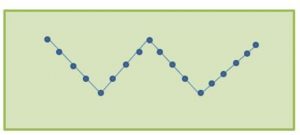Soil fertility refers to the ability of a soil to supply nutrients and sustain plant growth. It is an important measure for farmers, as it determines how much fertiliser they need to apply.
A fertile soil will contain the following nutrients for basic plant nutrition.
Primary nutrients:
- Nitrogen (N)
- Phosphorus (P)
- Potassium (K)
Secondary nutrients (needed in smaller quantities):
- Sulphur (S)
- Calcium (Ca)
- Magnesium (Mg)
Trace elements:
- Iron (Fe)
- Manganese (Mn)
- Zinc (Zn)
- Copper (Cu)
- Boron (B)
- Molybdenum (Mo)
The most limiting nutrients for plant production are nitrogen, phosphorus and potassium. Most New Zealand pastoral soils are deficient in phosphorus, sulphur and, to a lesser extent, potassium, according to Hill Laboratories.
Soil testing is the first step for meeting nutrient requirements that maximise grass or crop production. According to DairyNZ, the average dairy farmer spends around $0.45 per kilogram of milk solids (KG MS) on fertiliser, making it one of the biggest farming investments.
Therefore, it is important that soil fertility is regularly monitored to improve cost–efficiency and overall pasture production.
How to soil sample
Sample the paddock in a W pattern. Take one sample for each 2–4 ha if the area is uniform. Avoid gateways, ditches and troughs.Take a minimum of 15 soil cores to a depth of 75mm using a standard soil auger and mix them together to comprise one sample. Avoid soil sampling if the ground is saturated or unusually dry.
When sampling, divide the farm into individual paddocks or areas that can be easily managed when applying fertiliser.

Figure 1: When soil sampling, the field should be sampled in a W pattern
When to sample your soil
It is best to soil sample at a similar time each year for comparison. The ideal time is early winter, and there is no time like the present! This will allow you to put a fertiliser plan in place for 2019/20 that targets specific paddocks with specific nutrients.
Do not sample until three months after your last fertiliser application.
Results
There is no point in sampling your soil unless you utilise the results. When you get your soil test results it is important to then develop a fertiliser programme specific to each paddock. This will save you money by ascertaining the correct rate of fertiliser to apply in each paddock. Applying too much fertiliser is just as wasteful as applying too little. Nutrient budgets are now a key component of individual Farm Environment Plans (FEP). FEPs help farmers proactively manage on–farm fertiliser use to minimise their impact on the environment.
Below is a breakdown of optimum nutrient ranges for pasture production, provided by DairyNZ:
| Soil Test | Critical range required for maximum pasture production on all soils |
| Quick test K | 7-10 |
| Quick test Mg | 8-10 (pasture production), 25-30 (animal health) |
| Quick test Ca | > 1 |
| Quick test Na | > 3-4 (for animal health, not required for plant growth) |
| Sulphate S | 10-12 |
| Organic S | 10-12 |
| Soil pH | 5.8-6.0 (mineral soils), 5.0-5.5 (peat soils) |
Soil pH
The most important deficiency to correct and the cheapest one. For pastures, target a soil pH of 5.8 to 6.2. Apply lime according to soil test recommendations.
Benefits of correcting pH:
· Release up to 80 kg of nitrogen from the soil compared with low pH soils
· Make P and K more available in the soil
· Increase efficiency of applied N, P and K fertiliser
Phosphorus (P)
Phosphorus is necessary for physiology of the plant, including photosynthesis, root and tiller development. As with other nutrients, P can get ‘locked–up’ in the soil if the pH is low – another reason why correcting pH should be the first step in improving soil fertility.
Potassium (K)
Potassium is essential for both plant and animal growth. However, according to a Balance 2019–2015 survey, soil potassium fertility is below optimum on 35 percent of New Zealand pastoral farms.
Potassium can be applied in autumn or spring. However, best practice is to split the application instead of applying large amounts in one go.
